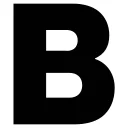2024 State of Banking Report
NerdWallet’s latest banking survey finds that some Americans opened new savings accounts in the past 12 months, with higher interest rates being a top motivator for doing so.

Many, or all, of the products featured on this page are from our advertising partners who compensate us when you take certain actions on our website or click to take an action on their website. However, this does not influence our evaluations. Our opinions are our own. Here is a list of our partners and here's how we make money.
A new NerdWallet survey finds that nearly 3 in 5 Americans with financial accounts (59%) report having more money saved now than they did 12 months ago. But is that extra money earning the interest it could be?
Until recent years, savings account interest rates were so low they almost weren’t worth consideration. But now, the difference in rates between the average brick-and-mortar bank and an online-only bank could make a meaningful difference in your savings account, even as interest rates change throughout the economy.
The NerdWallet survey of over 2,000 U.S. adults — among whom 1,996 have financial accounts, referred to as “banking customers” throughout this report — conducted online by The Harris Poll in July 2024, asked Americans if they’re keeping their savings in brick-and-mortar banks, online-only banks or both. We also asked about what bank features and services are most important to banking customers, and why some still opt for brick-and-mortar banks in an increasingly online world.
Key findings
Bank users prioritize both online and in-person services: The survey found that 57% of banking customers say online access is among the most important banking services and features to them, and 54% say the same about mobile apps. Still, 53% say physical branches and 44% say phone customer service are among the most important bank features.
Many brick-and-mortar banking customers are satisfied with online services: Of Americans who have a savings account with a brick-and-mortar bank but not an online-only bank, 50% cite their current bank having all the online services they want or need as a reason why.
Some opened savings accounts at new banks to get better rates: According to the survey, 12% of Americans opened a savings account at a new or separate bank in the past 12 months. The top reason why? More than a third (36%) say the new bank had a higher savings account interest rate than their previous bank.
“Every consumer has different banking needs, be it access to in-person customer service or the need for lower fees,” says Elizabeth Ayoola, personal finance writer at NerdWallet. “Luckily, it doesn’t have to be either/or since customers can combine online bank accounts with traditional brick and mortar bank accounts to achieve the optimum banking experience.”
Online access, fee-free ATMs important to banking customers
According to the survey, the bank services and features banking customers say are among the most important to them are online access (57%), a fee-free ATM network (56%) and mobile apps (54%).
Some banking customers want human contact from their banks. More than half (53%) say that physical bank branches are among the most important features and services to them, and 44% say the same about phone customer service.
What you can do: Evaluate your current accounts
Most banking customers (87%) are satisfied with their bank overall, but if you feel that yours is lacking, maybe it’s time for a change. Consider which services and features are personally important and start researching your bank options.
“To assess whether it may be time to explore new banking options, start by writing down the qualities of your ideal bank,” Ayoola says. “Consider characteristics like fees, ATM cash deposits, the ability to make large withdrawals, customer service wait times, mobile app features, access to loan products and interest rates on savings. Once you’re clear about what you’re looking for, you can decide whether you’re at the right bank or it’s time to look for something new.”
Brick-and-mortar banks still going strong
One major consideration when choosing a bank is whether to go with a brick-and-mortar or an online-only bank, each of which have their pros and cons. Online-only banks tend to have higher interest rates, while brick-and-mortar banks make in-person banking more accessible.
According to the survey, while 13% of Americans have savings accounts at both brick-and-mortar and online-only banks, a whopping 40% of Americans have savings accounts only at brick-and-mortars.
Half (50%) of Americans with savings accounts at a brick-and-mortar bank, but not at an online-only bank say it’s because their brick-and-mortar gives them all the online services they need. Nearly as many say it’s because they like to have their savings at a local bank (47%) or prefer in-person customer service (46%).
While some online banks do have physical locations that allow cash deposits and in-person customer service, these tend to be limited to larger metropolitan areas. So customers who prioritize cash deposits and large withdrawals, as well as other in-person services, may be best served by a brick-and-mortar bank. But for those who don’t regularly need access to a physical branch, it’s a good idea to run the numbers and see if an online bank with a higher savings interest rate is worth the effort of switching or adding a new institution to your banking ecosystem.
What you can do: Compare rates, just in case
Around 1 in 12 Americans with brick-and-mortar savings accounts but not online-only savings accounts (8%) say it’s because they don’t think the interest rates at online-only banks are high enough to justify the switch. Depending on your bank’s current rate and how much you have saved, this could be true, but it’s worth it to take a look. Online-only banks tend to have much higher interest rates than traditional brick-and-mortar banks.
As of September 2024, there are a number of high yield savings accounts at online-only banks with interest rates at or around 5%. According to the Federal Deposit Insurance Corporation, the national average APY is just 0.46%, as of August 2024.
Let’s say you have $10,000 in savings. After one year, a 5% APY would earn you $512 in interest, while a rate of 0.46% would return just $46. After five years, the interest earned would be $2,834 and $233 respectively. You can use a compound interest calculator to see how much of a difference a higher rate could make on your savings balance. Of course, rates can change over time – and may start to drop especially in the second half of 2024 – but online-only banks have historically outperformed traditional brick-and-mortar banks when it comes to savings account interest rates.
“Switching banks can feel like a hassle, but it could mean the difference between saving hundreds of dollars to saving thousands,” Ayoola says. “If switching banks isn’t the right option for you, consider using a few banks that serve different purposes. That could look like having savings housed in an online-only savings account with higher interest rates and using a brick-and-mortar bank for daily expenses.”
Interest rates are a top reason for opening new savings accounts
Some banking customers may have done the math already, as evidenced by how many Americans have opted for new bank accounts and why. The survey found that 9% of Americans changed their primary bank in the past 12 months, and 12% of Americans opened a savings account at a new or separate bank in the past year.
The top reason the latter group opted for a new account is because the new bank had a higher savings account interest rate than their previous bank (36%), followed by a promotional bonus for opening a new savings account (32%).
Nearly a quarter of those who opened a savings account at a new or separate bank (24%) did so because they wanted a better customer service experience and 22% say it’s because their previous bank charged them fees on their savings account.
What you can do: Consider all the factors when opening a new bank account
According to the survey, almost half of banking customers (46%) would consider switching their primary bank for a promotional bonus. This could be a good choice, but only if it checks other important boxes.
Consider a variety of factors — interest rates, fees, customer service, location, accessibility — before switching primary banks. A promotional bonus is a great perk, but if you end up at a bank that charges monthly maintenance fees, has low interest rates and/or doesn’t allow you to get a customer service representative on the phone, it’s probably not worth it. Evaluate accounts with the promotional bonus as one factor, not the only factor, for making a decision about the best primary bank for you.
“Choosing a bank that meets your needs can help ensure you have access to products and features that help you meet daily financial needs and attain long-term goals,” Ayoola says. “High interest rates, promotional bonuses, affordable access to overdrafts and loan products are just some things that can support your journey to healthy finances.”
Methodology
This survey was conducted online within the United States by The Harris Poll on behalf of NerdWallet from July 9-11, 2024, among 2,095 U.S. adults ages 18 and older, among whom 1,996 have financial accounts. The sampling precision of Harris online polls is measured by using a Bayesian credible interval. For this study, the sample data is accurate to within +/- 2.5 percentage points using a 95% confidence level. For complete survey methodology, including weighting variables and subgroup sample sizes, please contact [email protected].
Disclaimer
NerdWallet disclaims, expressly and impliedly, all warranties of any kind, including those of merchantability and fitness for a particular purpose or whether the article’s information is accurate, reliable or free of errors. Use or reliance on this information is at your own risk, and its completeness and accuracy are not guaranteed. The contents in this article should not be relied upon or associated with the future performance of NerdWallet or any of its affiliates or subsidiaries. Statements that are not historical facts are forward-looking statements that involve risks and uncertainties as indicated by words such as “believes,” “expects,” “estimates,” “may,” “will,” “should” or “anticipates” or similar expressions. These forward-looking statements may materially differ from NerdWallet’s presentation of information to analysts and its actual operational and financial results.








